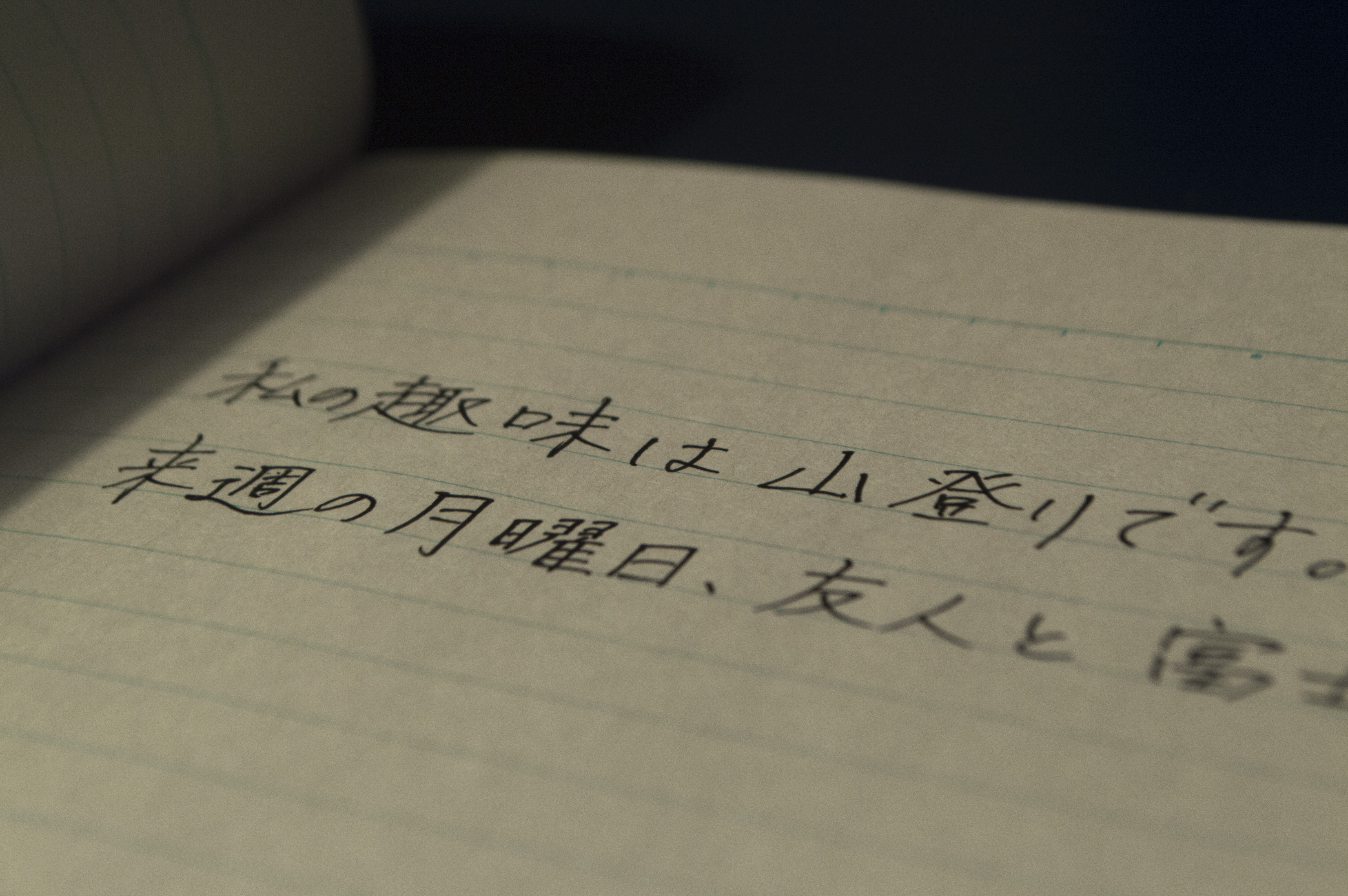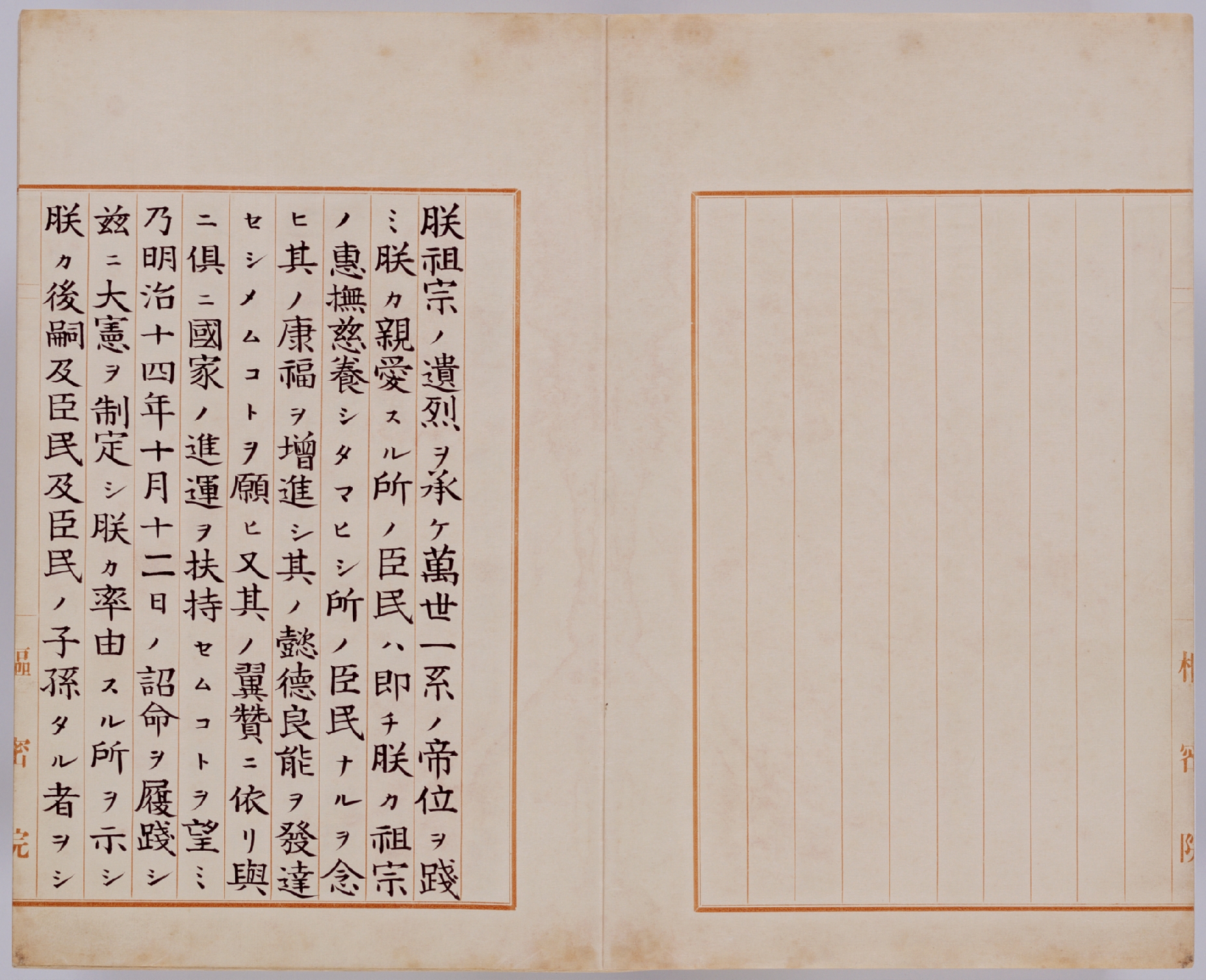|
Nari (kana)
In the Japanese writing system are ligatures in the kana writing system, both hiragana and katakana. Kana such as and are not kana ligatures, but polysyllabic kana. Hardly any kana ligatures or polysyllabic kana are represented in standard character encodings. History These characters were widely used until a spelling reform of 1900 decreed that each sound (mora) would be represented by one (kana) character. They were not represented in computer character encodings until JIS X 0213 JIS X 0213 is a Japanese Industrial Standard defining coded character sets for encoding the characters used in Japan. This standard extends JIS X 0208. The first version was published in 2000 and revised in 2004 (JIS2004) and 2012. As well as a ...:2000 (JIS2000) added ''yori'' and ''koto''. List Hiragana ligature Polysyllabic hiragana Katakana ligature Polysyllabic katakana In Unicode See also * Yori (kana) References {{Reflist Kana Typographic ligatures ... [...More Info...] [...Related Items...] OR: [Wikipedia] [Google] [Baidu] |
Japanese Writing System
The modern Japanese writing system uses a combination of logographic kanji, which are adopted Chinese characters, and syllabic kana. Kana itself consists of a pair of syllabaries: hiragana, used primarily for native or naturalised Japanese words and grammatical elements; and katakana, used primarily for foreign words and names, loanwords, onomatopoeia, scientific names, and sometimes for emphasis. Almost all written Japanese sentences contain a mixture of kanji and kana. Because of this mixture of scripts, in addition to a large inventory of kanji characters, the Japanese writing system is considered to be one of the most complicated currently in use. Several thousand kanji characters are in regular use, which mostly originate from traditional Chinese characters. Others made in Japan are referred to as “Japanese kanji” ( ja, 和製漢字, wasei kanji, label=none; also known as “country’s kanji” ja, 国字, kokuji, label=none). Each character has an intrinsic meanin ... [...More Info...] [...Related Items...] OR: [Wikipedia] [Google] [Baidu] |
Yori (kana)
, read as ''yori'', is a kana ligature – a typographic ligature in the Japanese language – consisting of a combination of the hiragana graphs of (/yo/ ) and (/ri/ ), and thus represents their combined sound, より (/yori/ ) ''"from"''. It is drawn with two strokes. It is uncommon and found almost exclusively in vertical writing. In Unicode See also * Yo (kana) *_Ri_(kana) *_Koto_(kana) *_Katakana Specific_kana {{Writingsystem-stub}.html" ;"title=". When small and preceded by an -i kana, this kana represent ... * Ri (kana) * Koto (kana) * Katakana Specific kana {{Writingsystem-stub}">. When small and preceded by an -i kana, this kana represent ... * Ri (kana) * Koto (kana) * Katakana Specific kana {{Writingsystem-stub} When small and preceded by an -i kana, this kana represent ... * Ri (kana) * Koto (kana) * Katakana is a Japanese syllabary, one component of the Japanese writing system along with hiragana, kanji and in some cases the Latin script (kno ... [...More Info...] [...Related Items...] OR: [Wikipedia] [Google] [Baidu] |
Katakana Nari
is a Japanese syllabary, one component of the Japanese writing system along with hiragana, kanji and in some cases the Latin script (known as rōmaji). The word ''katakana'' means "fragmentary kana", as the katakana characters are derived from components or fragments of more complex kanji. Katakana and hiragana are both kana systems. With one or two minor exceptions, each syllable (strictly mora) in the Japanese language is represented by one character or ''kana'' in each system. Each kana represents either a vowel such as "''a''" (katakana ア); a consonant followed by a vowel such as "''ka''" (katakana カ); or "''n''" (katakana ン), a nasal sonorant which, depending on the context, sounds either like English ''m'', ''n'' or ''ng'' () or like the nasal vowels of Portuguese or Galician. In contrast to the hiragana syllabary, which is used for Japanese words not covered by kanji and for grammatical inflections, the katakana syllabary usage is comparable to italics in En ... [...More Info...] [...Related Items...] OR: [Wikipedia] [Google] [Baidu] |
Katakana Toki 2
is a Japanese syllabary, one component of the Japanese writing system along with hiragana, kanji and in some cases the Latin script (known as rōmaji). The word ''katakana'' means "fragmentary kana", as the katakana characters are derived from components or fragments of more complex kanji. Katakana and hiragana are both kana systems. With one or two minor exceptions, each syllable (strictly mora) in the Japanese language is represented by one character or ''kana'' in each system. Each kana represents either a vowel such as "''a''" (katakana ア); a consonant followed by a vowel such as "''ka''" (katakana カ); or "''n''" (katakana ン), a nasal sonorant which, depending on the context, sounds either like English ''m'', ''n'' or ''ng'' () or like the nasal vowels of Portuguese or Galician. In contrast to the hiragana syllabary, which is used for Japanese words not covered by kanji and for grammatical inflections, the katakana syllabary usage is comparable to italics in En ... [...More Info...] [...Related Items...] OR: [Wikipedia] [Google] [Baidu] |
Katakana Shite
is a Japanese syllabary, one component of the Japanese writing system along with hiragana, kanji and in some cases the Latin script (known as rōmaji). The word ''katakana'' means "fragmentary kana", as the katakana characters are derived from components or fragments of more complex kanji. Katakana and hiragana are both kana systems. With one or two minor exceptions, each syllable (strictly mora) in the Japanese language is represented by one character or ''kana'' in each system. Each kana represents either a vowel such as "''a''" (katakana ア); a consonant followed by a vowel such as "''ka''" (katakana カ); or "''n''" (katakana ン), a nasal sonorant which, depending on the context, sounds either like English ''m'', ''n'' or ''ng'' () or like the nasal vowels of Portuguese or Galician. In contrast to the hiragana syllabary, which is used for Japanese words not covered by kanji and for grammatical inflections, the katakana syllabary usage is comparable to italics in En ... [...More Info...] [...Related Items...] OR: [Wikipedia] [Google] [Baidu] |
Katakana Digraph Koto
is a Japanese syllabary, one component of the Japanese writing system along with hiragana, kanji and in some cases the Latin script (known as rōmaji). The word ''katakana'' means "fragmentary kana", as the katakana characters are derived from components or fragments of more complex kanji. Katakana and hiragana are both kana systems. With one or two minor exceptions, each syllable (strictly mora) in the Japanese language is represented by one character or ''kana'' in each system. Each kana represents either a vowel such as "''a''" (katakana ア); a consonant followed by a vowel such as "''ka''" (katakana カ); or "''n''" (katakana ン), a nasal sonorant which, depending on the context, sounds either like English ''m'', ''n'' or ''ng'' () or like the nasal vowels of Portuguese or Galician. In contrast to the hiragana syllabary, which is used for Japanese words not covered by kanji and for grammatical inflections, the katakana syllabary usage is comparable to italics in En ... [...More Info...] [...Related Items...] OR: [Wikipedia] [Google] [Baidu] |
Katakana Ifu
is a Japanese syllabary, one component of the Japanese writing system along with hiragana, kanji and in some cases the Latin script (known as rōmaji). The word ''katakana'' means "fragmentary kana", as the katakana characters are derived from components or fragments of more complex kanji. Katakana and hiragana are both kana systems. With one or two minor exceptions, each syllable (strictly mora) in the Japanese language is represented by one character or ''kana'' in each system. Each kana represents either a vowel such as "''a''" (katakana ア); a consonant followed by a vowel such as "''ka''" (katakana カ); or "''n''" (katakana ン), a nasal sonorant which, depending on the context, sounds either like English ''m'', ''n'' or ''ng'' () or like the nasal vowels of Portuguese or Galician. In contrast to the hiragana syllabary, which is used for Japanese words not covered by kanji and for grammatical inflections, the katakana syllabary usage is comparable to italics in En ... [...More Info...] [...Related Items...] OR: [Wikipedia] [Google] [Baidu] |
Katakana Domo
is a Japanese syllabary, one component of the Japanese writing system along with hiragana, kanji and in some cases the Latin script (known as rōmaji). The word ''katakana'' means "fragmentary kana", as the katakana characters are derived from components or fragments of more complex kanji. Katakana and hiragana are both kana systems. With one or two minor exceptions, each syllable (strictly mora) in the Japanese language is represented by one character or ''kana'' in each system. Each kana represents either a vowel such as "''a''" (katakana ア); a consonant followed by a vowel such as "''ka''" (katakana カ); or "''n''" (katakana ン), a nasal sonorant which, depending on the context, sounds either like English ''m'', ''n'' or ''ng'' () or like the nasal vowels of Portuguese language, Portuguese or Galician language, Galician. In contrast to the hiragana syllabary, which is used for Japanese words not covered by kanji and for grammatical inflections, the katakana syllabary u ... [...More Info...] [...Related Items...] OR: [Wikipedia] [Google] [Baidu] |
Katakana Tomo
is a Japanese syllabary, one component of the Japanese writing system along with hiragana, kanji and in some cases the Latin script (known as rōmaji). The word ''katakana'' means "fragmentary kana", as the katakana characters are derived from components or fragments of more complex kanji. Katakana and hiragana are both kana systems. With one or two minor exceptions, each syllable (strictly mora) in the Japanese language is represented by one character or ''kana'' in each system. Each kana represents either a vowel such as "''a''" (katakana ア); a consonant followed by a vowel such as "''ka''" (katakana カ); or "''n''" (katakana ン), a nasal sonorant which, depending on the context, sounds either like English ''m'', ''n'' or ''ng'' () or like the nasal vowels of Portuguese language, Portuguese or Galician language, Galician. In contrast to the hiragana syllabary, which is used for Japanese words not covered by kanji and for grammatical inflections, the katakana syllabary u ... [...More Info...] [...Related Items...] OR: [Wikipedia] [Google] [Baidu] |






